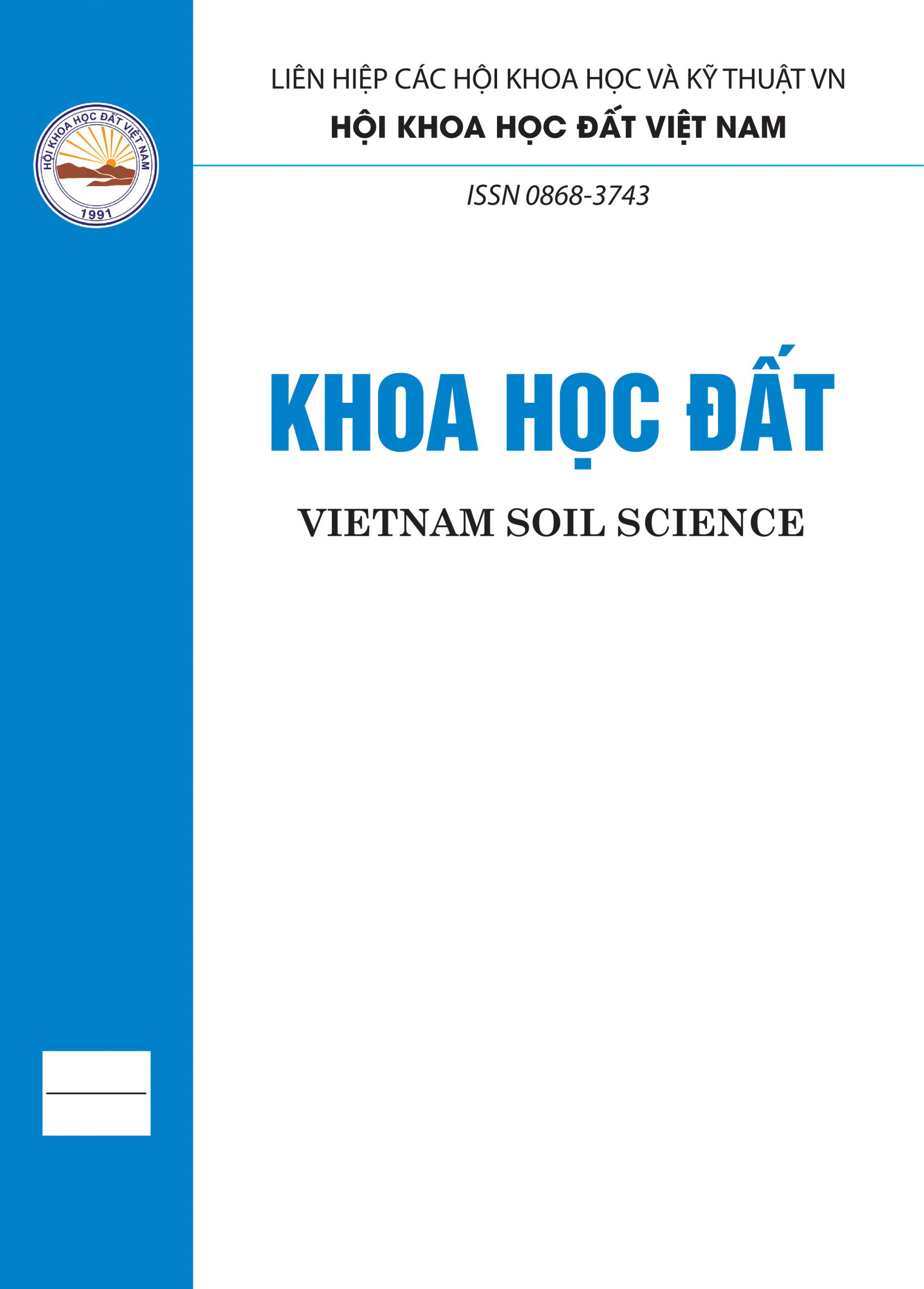ĐẶC ĐIỂM ĐẤT – NÔNG HOÁ VÀ ĐỀ XUẤT CHẾ ĐỘ BÓN PHÂN TRÊN ĐẤT CHUYÊN CANH LÚA TỈNH ĐẮK LẮK
Nguyễn Văn Thãi1, Nguyễn Xuân Nhiệm1, Lê Cảnh Định1, Phạm Quang Khánh2*
[1] Phân viện Quy hoạch và Thiết kế nông nghiệp2 Hội Khoa học Đất Việt Nam
* Email: phamquangkhanh47@gmail.com
TÓM TẮT
Sử dụng đất hợp lý, hiệu quả và bền vững luôn là yêu cầu cần thiết đặt ra trong quản lý, sử dụng tài nguyên đất đai. Bảo vệ và phát triển diện tích đất trồng lúa là một mục tiêu nhằm bảo đảm an toàn lương thực của Quốc gia. Nghiên cứu đặc điểm chất lượng đất nông hoá, đề xuất bổ sung lượng dinh dưỡng cần thiết là cơ sở khoa học cho việc canh tác hiệu quả, hợp lý và bền vững diện tích khoanh định bảo vệ đất trồng lúa của tỉnh Đắk Lắk. Đây là cơ sở quan trọng trong quản lý, sử dụng tài nguyên đất đai theo hướng hiệu quả và bền vững.
Từ khóa: Đặc điểm đất, bón phân, lúa, Đắk Lắk.
SUMMARY
Agrochemical soil characteristics and proposal fertilizer dosage for rice cultivation
in Dak Lak province
Nguyen Van Thai1, Nguyen Xuan Nhiem1, Le Canh Dinh1, Pham Quang Khanh2
1 Sub-National Institute of Agricultural Planning & Projection
2 Vietnam Society of Soil Science
The research contents including: (i) Application of Vietnamese National soil classification systems with additional updated according to FAO/WRB 1998, 2006; (ii) Created the agrochemistry map of rice cultivation areas in Dak Lak province; (iii) Proposing the amount of fertilizer needed for the rice cultivation in Dak Lak province.
Some of results were obtained:
The rice cultivation area has 09 soil units belonging to 5 major soil groups. In which: The valley major soil group has the largest area of 27,591 ha, accounting for 39.71% of total surveyed area (TSA), following by alluvial soil group of 20,758 ha, accounting for 29.88% TSA; dark rosdist soil group of 17,414 ha accounting for 25.06% TSA; light grey soil group of 3,661 ha, accounting for 5.27% TSA and finally muddy soil group of 52 ha, accounting for only 0.08% TSA.
There are 17 agrochemistry soil units with different characteristics and quality. In which, the level of soil fertility is determined into 3 levels: high fertility is 14650 ha (21.09% TSA), medium fertility of 53674 ha (77.25% TSA) and low fertility of 1152 ha (1.66% TSA).
Propose the amount of nutrients (3 macronutrients N, P, K) and the amount of fertilizer required for rice cultivation per unit of an agrochemistry soil unit to achieve a yield of 8 tons/1 ha.
Keywords: Soil charateristics, fertilization, rice, Dak Lak.
Người phản biện: PGS.TS. Đào Châu Thu
Email: chauthu9lvh@gmail.com
Ngày nhận bài: 09/9/2022
Ngày thông qua phản biện: 15/10/2022
 Tạp chí
Tạp chí




